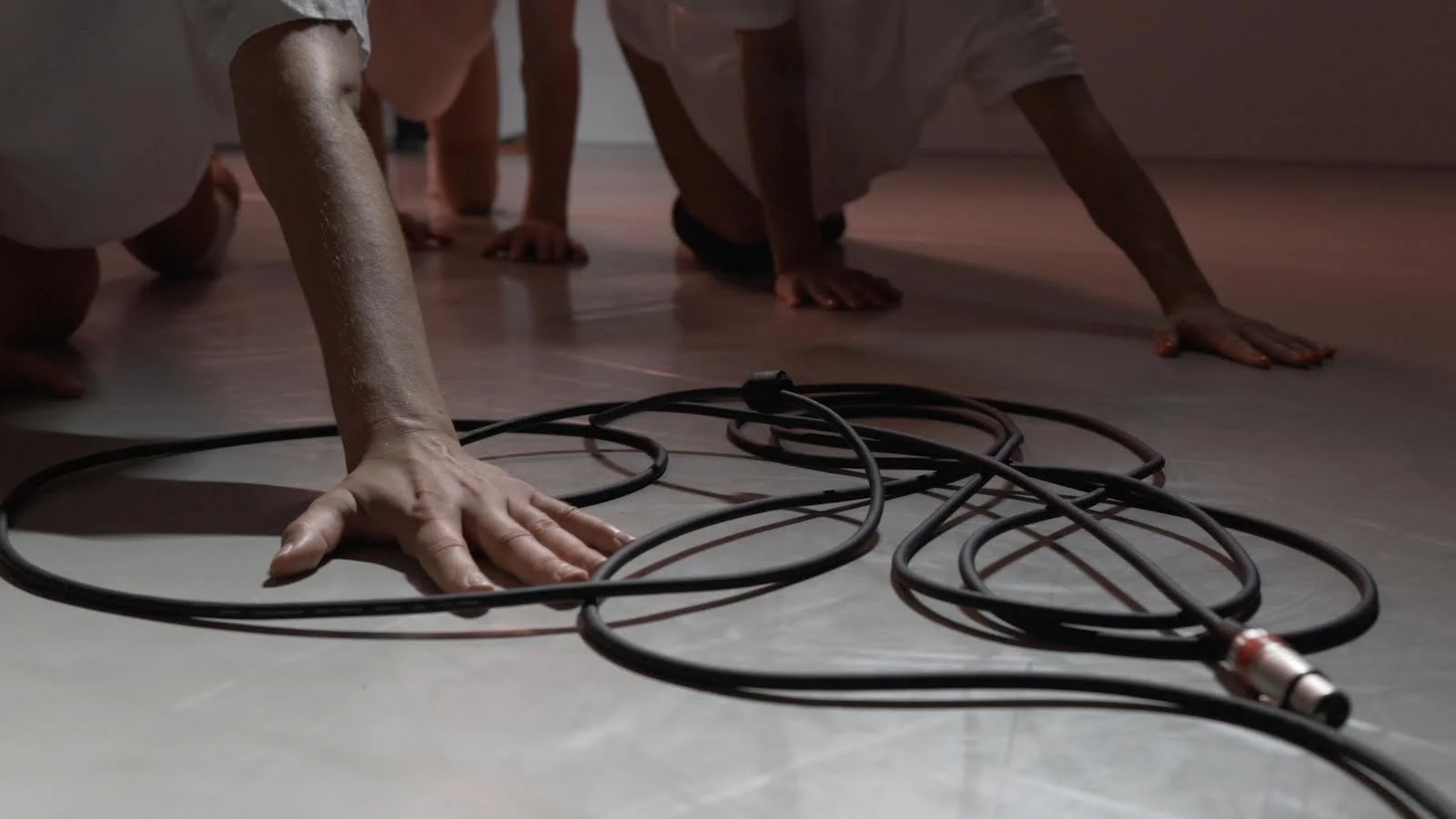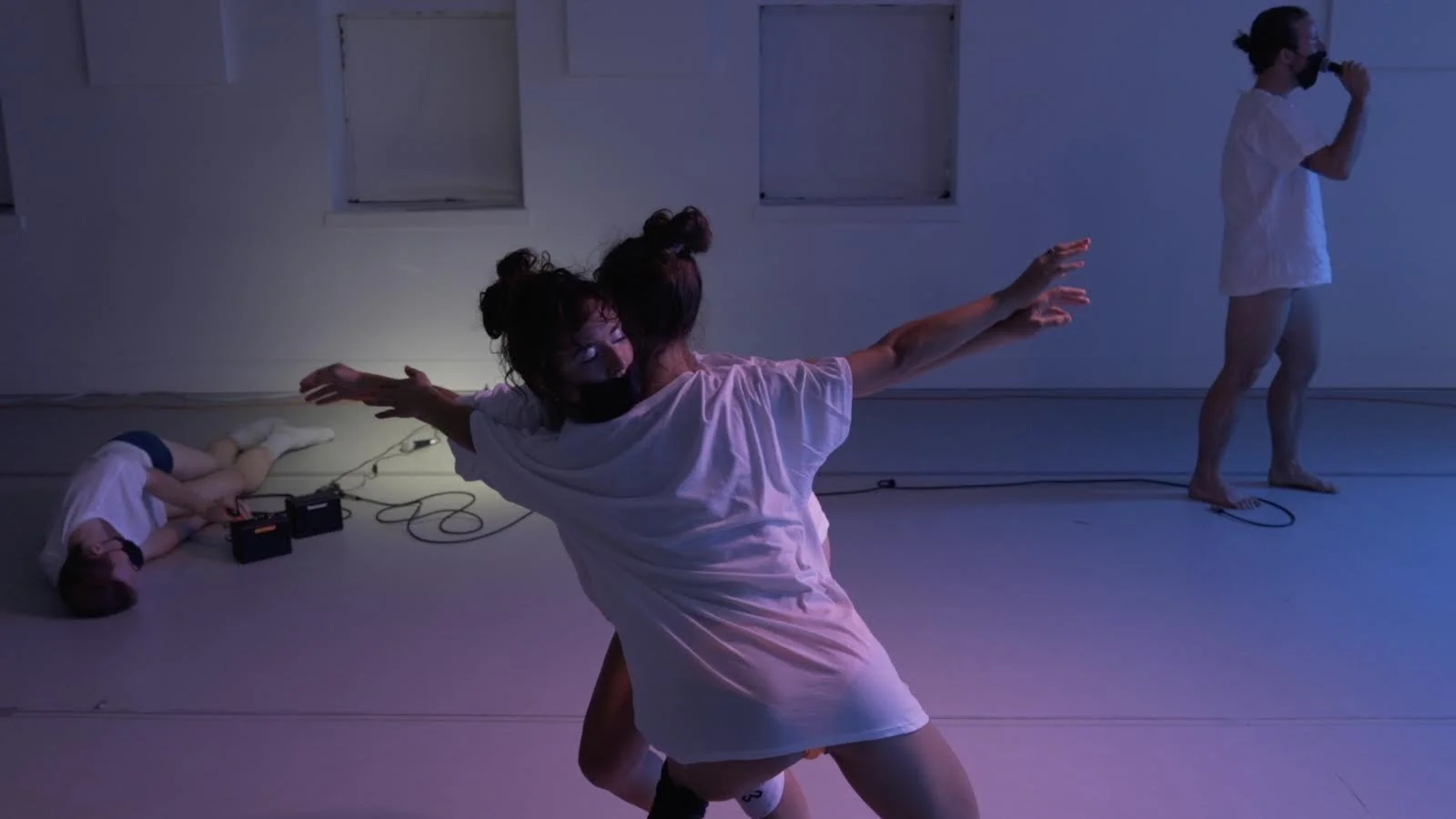In Core/Us, Vanessa Goodman choreographs sound, movement, and cables at Dancing on the Edge
The technologically savvy artist’s new four-person work pushes her exploration of live-generated vocalizations further
Choreographing the architecture of the cabling as well–that’s really beautiful to me as well,” Vanessa Goodman says. Photo by David Cooper
Dancing on the Edge Festival presents Core/Us at the Firehall Arts Centre on July 7 at 7 pm and on July 8 at 9 pm
HELICON VOCODERS, DITTO loop pedals, Kaoss Pads, and XLR connectors: Vancouver choreographer Vanessa Goodman has not only turned them into her key dance tools, she doesn’t need help from the tech crew setting them up, thanks anyway.
In fact, the Action at a Distance artistic director has just finished that setup process in Seattle, where her new four-person work Core/Us, with its microphones and live-generated sound, has premiered at the On the Boards festival before heading here for Dancing on the Edge.
“I actually enjoy doing it, and being self-sufficient: it's like a little ritual, where I start in each corner setting up the materials we need, and then starting to plug it in,” she tells Stir from Seattle. “I love seeing how it all eventually feeds into the mixer—it’s like the connective tissue of the work.
“For me, also, there’s the choreography of the dancers understanding the technology and knowing what to do if something goes wrong or doesn't sound right,” the dance artist continues with enthusiasm, her seven-month-old baby gurgling in her arms as she speaks over the phone. “It’s really about understanding how everything is hooked up and how the cables move, and choreographing the architecture of the cabling as well–that’s really beautiful to me as well. That’s like a whole other layer of choreography. I would say in some ways it's the most important choreography of the piece to me.”
Experimenting with sound and technology, and growing into a legit dance gearhead, has been a cumulative process for the choreographer. From her earliest days, she was interested in “making the entire room dance”, whether that was with projections, moving set pieces, or, more recently, sound that is generated and manipulated by herself as a soloist or other dancers.
Tracing her fascination with sound back, she says it started with the purchase of a theramin, which led to experiments with loop pedals and microphones.
Core/Us. Photo by David Cooper
That eventually led to her critically celebrated collaboration with American composer Caroline Shaw, with Graveyards and Gardens at the height of the pandemic: presented by Music on Main, it found soloist Goodman vocalizing into vocoders amid a circular landscape of snaking orange cords and retro-lo-fi rec-room sound devices, from record players to tape decks.
More recently, Goodman created a commission for Ballet BC alumna Alexis Fletcher and Ted Littlemore called Tuning. Premiering in February at the Shadbolt Centre for the Arts, it was a hypnotic duet in which the two dancers vocalized into microphones, “tuning into” each other on an intimate level.
“I love the idea of the dancers being able to curate the sound and being able to control and shape that for each other,” Goodman says. “And I love the idea of the body as an instrument.”
Now Goodman, who’s been developing Core/Us since 2019, explores the use of live-generated sound with four dancers—Anya Saugstad, Eowynn Enquist, Ted Littlemore, and Adrian de Leeuw. Brady Marks has given Goodman and her dancers added “sonic mentorship”, with James Proudfoot bringing extra atmosphere to the live score with his lighting design.
“I was really interested in how we could build almost a sense of a choir with multiple people—how we could compose the space as a choir,” Goodman says. “Brady has called it a ‘mini opera’. It creates this hybrid space between movement and sound.”
For this work there are four dancers and four microphones placed around the stage, along with a small loop pedal, two helicon vocoders, and the Kaoss Pad that sometimes acts as a drum machine. Nothing is pre-recorded. Dancers’ voices warp, echo, and distort through the space in the room, mirroring or emulating what the bodies are doing or causing friction or tensions that drive the movement.
Through Core/Us, Goodman says she’s been able to build a balance between the vulnerability and fragility in the relationships between the dancers, and the strength and power of what the choreographer calls “virtuosic listening”.
“And that builds this feedback loop,” she says, and this time she’s not referring to her high-tech gear: “There’s this reciprocal relationship of give and take between and performers—and the audience.”














